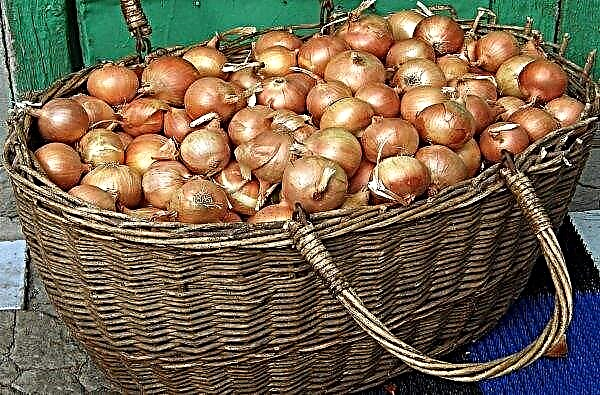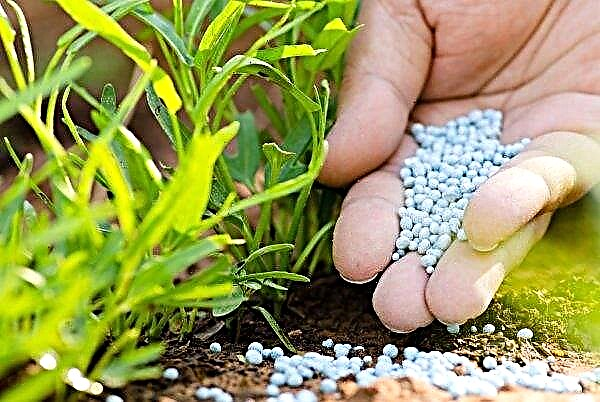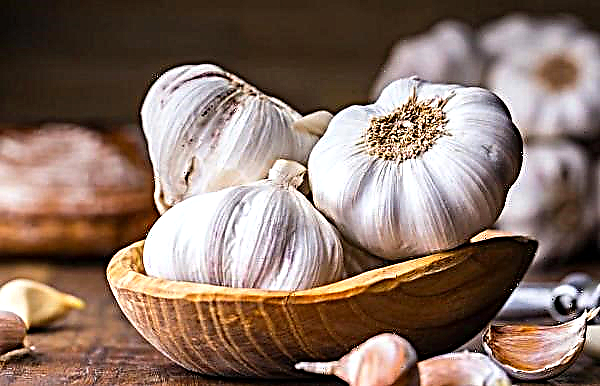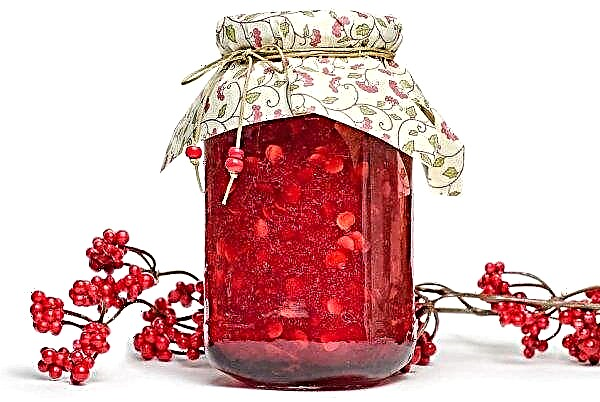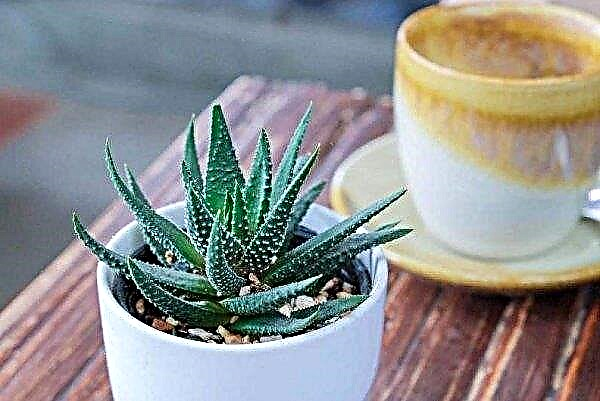The appearance of the entire flowerbed depends on the evenness of many flowers, so when planting plants it is so important to adhere to certain rules for the placement and further cultivation of flower crops. This requirement also applies to the cultivation of gladioli, which quite often grow curved and often break without a garter. Why this happens, and what actions should be taken to obtain smooth and beautiful flowers - read in this article.
Why do gladioli grow curves and fall
These flowers always tend to grow vertically, but because of their length, the stem often leans to the side and grows farther already curved. Such a flower will not look beautiful either in a cut or in a flower bed, so it is worthwhile to study in advance all the possible causes of such a phenomenon and take appropriate measures to prevent undesirable consequences.
Did you know? Many legends are associated with the appearance of gladiolus flowers, but according to the most common, they became the swords of two gladiator friends Teres and Sevt, who refused to fight each other to please the emperor and were executed together on his orders.
In most cases, there are two main reasons for the curvature of gladioli. Too small planting of bulbs, to a depth of not more than 5–7 cm from the soil surface. The top layer of the substrate dries quickly, which is why the plants every day lack moisture and are already leaning toward the ground by evening. At night, their moisture is increased, but the stems each time less and less aligned, and remaining curved.
Maintaining constant moisture levels when growing flowers in the country is quite difficult, since most summer residents come to the site only for the weekend. In such a situation, the only possible way out of the situation is to comply with all the requirements for planting a flower crop, with a bulb deepening by at least 12-15 cm deep into the soil.

The second reason for curved peduncles in gladioli is a lack of calcium in the soil or an excess of nitrogenous components. In each of these cases, plant tissues become very loose over time, so the stem can no longer support the peduncle in a normal position and bends under its weight. To correct the situation at the initial stages of the appearance of the problem, it is worth adding calcium nitrate and potassium phosphate to the soil, performing top dressing according to the attached instructions.
In addition, do not forget that gladioli themselves are tall flowers, with not very thick stems, therefore in the absence of support in the neighborhood, they can break simply due to the weight of the apical part, which is quite logical.
Diseases and Pests
Like other flower crops, gladioli are susceptible to attacks by pests and diseases, some of which can cause the bending of stems and inflorescences. First of all, we are talking about bacterial scab, fusariosis, gladiolus cancer, jaundice and viral mosaicdue to which the flower quickly weakens and its stem part becomes not as elastic as before. This is especially noticeable with a strong defeat by scab and jaundice, although root cancer is no less dangerous for the decorative culture.

As for pests, the most relevant in this case can be attributed thrips and wirewormsthat damage different parts of the plant and make it unstable. By the way, the latter is the causative agent of many fungal diseases, so the harm from it is double.

Prevention and control measures for each problem have some common features for different groups:
- the affected areas of flowers should be immediately cut and destroyed;
- spray the rest of the plant with a fungicidal or insecticidal composition (depending on the type of pest or disease);
- in the future, control the regime of moistening, top dressing and crop rotation of flower stands (do not plant flowers after solanaceous crops, especially tomatoes and potatoes).
Without fail, tubers are processed after digging for the winter, and the aerial part of the flowers can be sprayed even when the first signs of the disease appear.
Important! With fusariosis, bacterial scab and cancer, it is better to dig out the sick gladiolus from the ground and destroy it, and treat the place of planting with a suitable fungicide, carefully distributing it throughout the entire thickness of the soil in the hole.
How to plant gladioli so that they do not fall and are even
The correct development of gladioli in the garden in many respects depends on the fulfillment of general requirements when planting them. For example, Before performing the procedure, it is necessary to add nitrophoska to the moistened substrate, planting fertilizer in the ground 3-4 cm below the bottom of the corm (one well should be consumed 1-2 g of fertilizer).
The second thing that you should pay special attention to is the depth of the onions. In most cases, this indicator depends on the size of the planting material itself, and on average, with a diameter of 4-5 cm, it is necessary to deepen gladioli by 10-12 cm, increasing these values to 15 cm on sandy and loose chernozem soils or decreasing to 7–9 cm on downed clay substrates.

Adult bulbs must be planted separately from small ones, otherwise they will not allow them to grow and develop normally. The largest specimens are placed on separate beds, away from the main group. With their help, you can create another full flower garden on the other side of the site.
The right landing site will be equally important.. In the shade or on swampy soils, gladioli should not have a high decorative effect, therefore, so that the stems do not bend and the flower stalks open well, it is better to give preference only to well-ventilated and well-lit places with deep groundwater.
Did you know? The decorative qualities of gladioli began to be massively evaluated by flower growers only at the beginning of the 19th century, immediately after the Englishman W. Herbert first crossed several South American varieties of these flowers and received a new beautiful flower.
Do I need to tie up gladioli
Given the external characteristics of these flowers and their long stalk, the question of the garter of gladioli will always be relevant, especially if the grower rarely appears on the site and only manages to plant plants, without providing them with further full care. If you do not fix the flowers at first, then in a month it will be too late to do, since they begin to fall to the side or even fall to the ground, continuing to grow in a horizontal position.
To maintain the high decorativeness of gladioli for the entire time of their flowering, it is better to tie plants while the shoots are still relatively short and are arranged strictly vertically, but how exactly to attach the plants to a support (stick) installed nearby can be determined based on the number of flowers and especially their location on the garden bed.

How to tie gladioli
There are just as many ways to garter gladioli as your imagination and improvised materials are enough to implement your plan. In fact, so that the branches do not begin to bend and bend, and adult flowers do not become completely crooked, you can simply drive a small support stake next to each plant and tie the stem to it with soft ropes.
When placing flowers in rows, it is often practiced to install a group protective structure, which can be done using a dense mesh or a rope stretched between two stakes. Install such a structure in the spring, digging in open ground by 8-10 cm (you need to achieve high stability of the structure). Caught between two parallel twined twines or next to a coarse mesh, the flowers will be supported by them and will not become crooked, with defects in inflorescences, and even in windy weather they will not change their position.
Important! When tying flowers to supports, try not to damage their stems with a rope, otherwise there is a possibility of plant damage by pests and diseases.
Is it possible to align gladioli when they are already curved
Initially, it is correct to plant gladioli and prevent them from bending in the future, much easier than trying to align the already curved stems of flowers, which in most cases for adult flowers it is no longer possible. Of course, while the carrion has not yet completely laid down on the ground, gardeners are trying to fix the stems to the supporting structure and hope for their further vertical growth.
But when planting bulbs, it is best to take into account the initial direction of young shoots: if the green aboveground part already "looks" to the side, then you should deepen the planting material into the ground at an angle, thereby aligning the position of the shoot with its further growth. If you can give it the right direction, then it will turn out to grow a flower of the correct and accurate form, not mutilated under its own weight.

In fact, the process of growing beautiful and even gladioli is not as complicated as it seems to many, and if you follow simple recommendations for planting and regular care of plants in some cases, a garter may not be needed.


